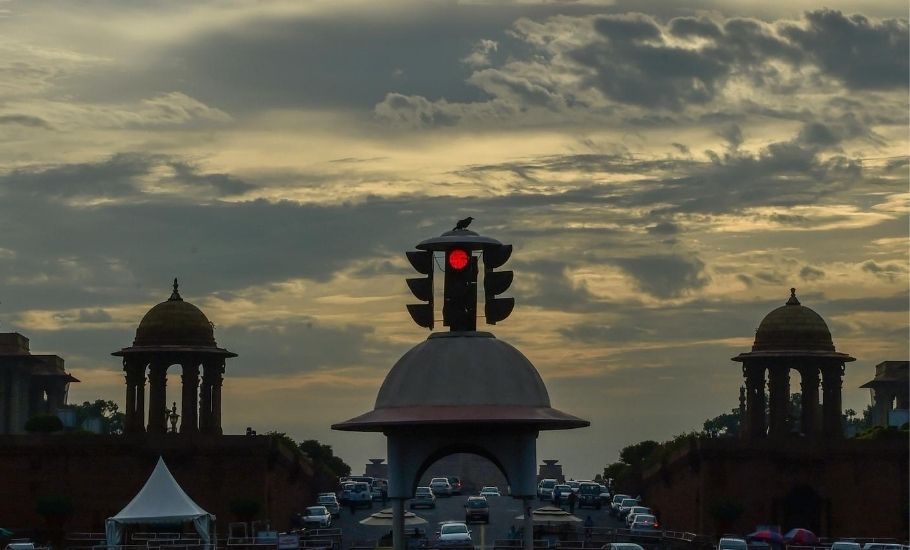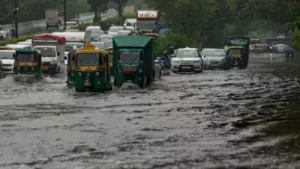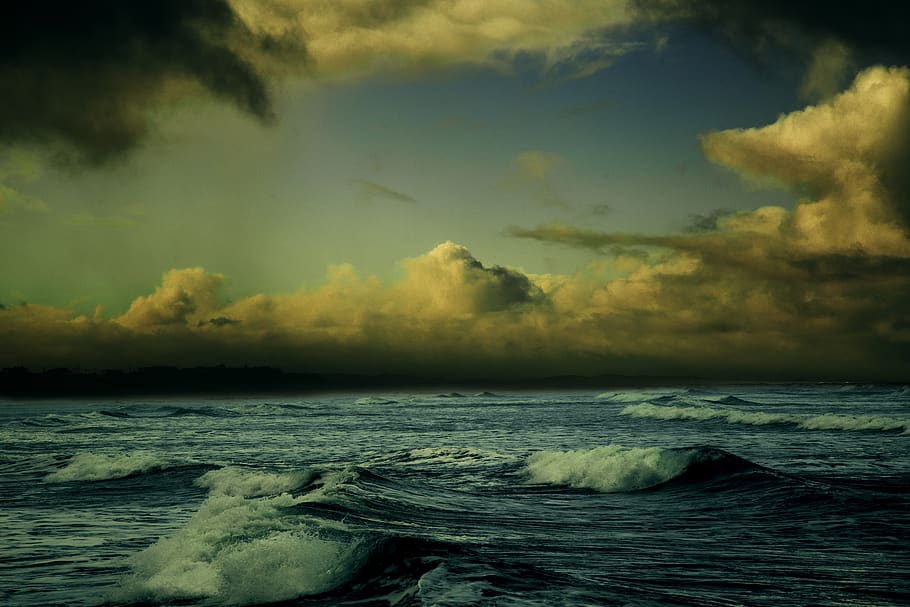
Monsoon musings: Doomscrolling, sorrow, renewal, Raga Malhar, magic and misery

In 2020, as the world grappled with the challenges of a global pandemic and we retreated indoors, often to find ourselves glued to our devices, a new term found its way to the modern lexicon: doomscrolling. It referred to the habit of endlessly scrolling through news and social media feeds, consuming a constant stream of distressing information. The phenomenon became so prevalent that the word was officially recognised by the Oxford English Dictionary.
I am reminded of the word as the relentless onslaught of climate change-induced extreme monsoon rain leaves a trail of death and destruction in its wake: a torrential downpour of anguish. As the heavy rains descend upon parts of north India, wreaking havoc with tremendous force, I have found myself incessantly trawling news feeds, flooded with images and reports of its catastrophic impact — consumed by a mix of anxiety, helplessness, and an insatiable thirst for more information.
Overflowing rivers, submerged cities
One of the most striking aspects of this monsoon season has been the swelling of rivers, including the Yamuna in Delhi, to dangerous levels. As the rivers have burst their banks, urban areas have faced the wrath of the monsoon. Homes have been swept away by the waves, roads have turned into rivers, and streets have become submerged in water, exposing the frailty of the civic infrastructure in the face of record-breaking rainfall. The monsoon has claimed several lives, with landslides and rain-related incidents triggering devastation in states like Himachal Pradesh, Punjab, Haryana, Rajasthan, and Uttar Pradesh.
Also read: Why films drop, humans tweet, mice guide and clouds hug information to themselves
The struggles faced by those whose lives have been disrupted are expectedly met with unpreparedness and even apathy; the authorities struggle to manage the overwhelming situation. As the death toll continues to rise, the rescue and relief operations have been escalated, with the National Disaster Response Force (NDRF) and the Army mobilising their resources to provide aid to the affected regions. However, their efforts have been hamstrung by the sheer scale of the disaster; Delhi, for instance, has logged the highest rainfall since 1982.
Rain: A muse of poets and writers
If you think about it, the rain this year has become a symbol of sorrow, a solemn reminder, as it were, of our vulnerability, and the fragility of existence. The impermanence of our habitats. The raindrops, to me, seem to echo the lamentations of the bereaved, the displaced, and the broken-hearted. This is a warning, too: If we ravage the planet, nature will find its own way to exact revenge. As it has done this year.

There is an unmistakable touch of irony here. The rain, which has spelt so much agony this year, is also known to send people on a romantic high. There are many for whom there is no joy greater than savouring samosas (add whatever you like to munch on during the monsoons) over endless cups of tea as rain pitter-patters on the roof. An eternal muse of poets and writers throughout the ages, it has also been romanticised in countless works of literature across genres: prose and poetry.
When the rain arrives after a period of enervating heat, the scent of wet earth permeates the air, evoking a deep sense of nostalgia and longing. In literature, the monsoon season has been depicted as a metaphor for renewal, cleansing, and even melancholic beauty. Each region’s cultural, geographical, and historical context shapes its own literary portrayal of the monsoon.
For example, the Tamil Sangam literature of ancient Tamil Nadu celebrates the monsoon as a time of fertility and abundance. The works of Rabindranath Tagore in Bengali literature shine light on the emotional and spiritual dimensions of the monsoon, reflecting the cultural ethos of Bengal. The Marathi literature portrays the monsoon as a season of self-reflection and introspection.
Every monsoon, I’m reminded of the tragic love affair between Frederic Henry and Catherine Barkley in Earnest Hemingway’s A Farewell to Arms, in the backdrop of the rain; a sense of doom looms over their relationship from the very beginning. Hemingway’s evocative descriptions of the rain intensify the tumultuous storms raging within their hearts.
In yet another favourite classic, Joseph Conrad’s Heart of Darkness, rain is employed as a narrative device to convey a sense of foreboding and the darkness that lurks within the human soul. The rain lashing in the heart of the Congo reflects the moral decay and the psychological disintegration of its characters; it tells us how nature can be as merciless and unforgiving as the human capacity for darkness.
Also read: Monsoon trips are fun; follow these 8 tips for safe travel during rains
Closer home, in Arundhati Roy’s Booker Prize-winning The God of Small Things, the heavy monsoon rains in Kerala become a catalyst for tragedy, exposing the fault lines within society and unleashing a chain of events that forever alters the lives of its characters. Monsoon in Ayemenem, where the novel is set, brings both joy and sorrow, renewal and destruction.
The opening lines describe the transformation that the rain brings to the region. May is depicted as a hot and oppressive month, filled with brooding and sullen expectations. The river shrinks, and the crows feast on mangoes while the air buzzes with the sounds of bluebottles. The scene is one of stagnation, waiting for the change that will come with the rain.
Then, in early June, the southwest monsoon arrives, breaking the oppressive heat and heralding three months of ‘wind and water’. The landscape, once parched and dry, turns an ‘immodest green,’ blurring boundaries and bringing life to the town. The tapioca fences take root and bloom, brick walls become mossy, and wild creepers reclaim the flooded roads.
The bazaars are filled with boats, and even the potholes on the highways become home to small fish. The monsoon’s arrival signifies a turning point in the lives of the twins, Rahel and Estha; the rain washes away the facade of normalcy and exposes the secrets that bind their family.
A raga for the rain
Rain has caused unprecedented mayhem this year, but in Indian classical music, it has been an impetus for a magical artistic expression. Raga Malhar, associated with rain, is known to hold mythical power. According to legend, singing Malhar can bring forth rainfall. Singers like Tansen, Baiju Bawra, and Meera Bai are said to have possessed the ability to induce rain through various forms of Raga Malhar.
One tale tells of Tansen’s quest for relief from the sweltering heat caused by singing Raga Deepak. He found solace in the singing of Tana and Riri, who performed Raga Malhar, bringing forth a downpour that cooled his body. Raga Malhar encompasses various related ragas, including ‘Miyan ki Malhar,’ ‘Megh Malhar,’ and others. ‘Miyan ki Malhar’ is a blend of ‘Brindavani Sarang,’ ‘Kafi,’ and ‘Durga’ ragas. It has a complex structure and is classified as a Ghambir Prakruti raga, played slowly and in a serious tone.

The magic of the monsoon lies in its ability to quench the sun-baked earth, breathing life into every blade of grass, every drooping flower. The first raindrops that patter against the windowpane carry with them a rejuvenating energy, washing away the dust and weariness of the scorching summer. The earth responds eagerly, unravelling a vibrant burst of green. This year, however, the story is grim. The life-giving showers, which are cause for celebration, are taking life instead.
The digital world: An abyss
Amidst the tragedy unleashed by the rains, there has been a bizarre spectacle playing out on our television screens. News anchors, seeking to capitalise on the chaos, are wading through knee-deep, waist-deep, and even neck-deep water to deliver their reports.
Some TV anchors, who openly profess their support to the ruling party at the Centre, have seized the opportunity to vilify the Arvind Kejriwal government in Delhi, rather than focusing on the real challenges at hand. The absurdity of these theatrics underlines the sensationalism and political posturing that often overshadow the true suffering of those affected by disasters as we saw in the case of Balasore train collision.
In many ways, the news coverage of the monsoon disaster itself feels like a manifestation of the very act of doomscrolling. The constant stream of updates and the deluge of information, much like the torrents of rain, elicits an emotional response, evoking a mixture of fascination, dread, and a morbid curiosity about what has been unfolding.
In the digital age, it has become all too easy to get caught in a vortex of desolation, consuming a never-ending barrage of tragic stories. As I reflect on this dark compulsion, I can’t help but feel a sense of collective weariness. Woe is us; we are all trapped in the endless loop of doomscrolling.
It starts innocently enough: a quick glance at our smartphones to catch up on the latest news or check our social media feeds. But before we know it, we find ourselves tumbling down a rabbit hole of doom and gloom, unable to tear our eyes away from it.
Each flick of the finger reveals another catastrophe, another tale of human suffering, another dose of despair. The digital landscape is indeed an abyss, sucking us into its depths, filling our days and nights with the weight of a thousand tears, and leaving us feeling despondent. Perhaps autumn may provide some respite from the burdens we carry. Will it?

